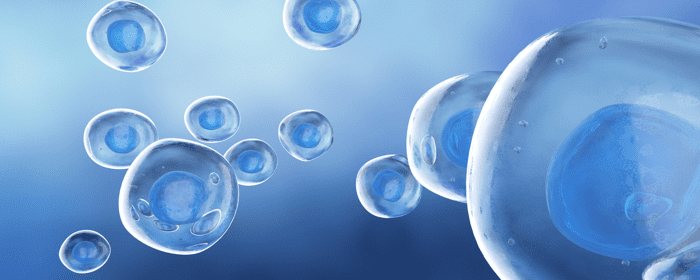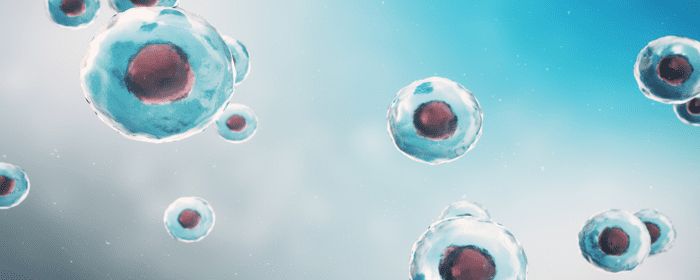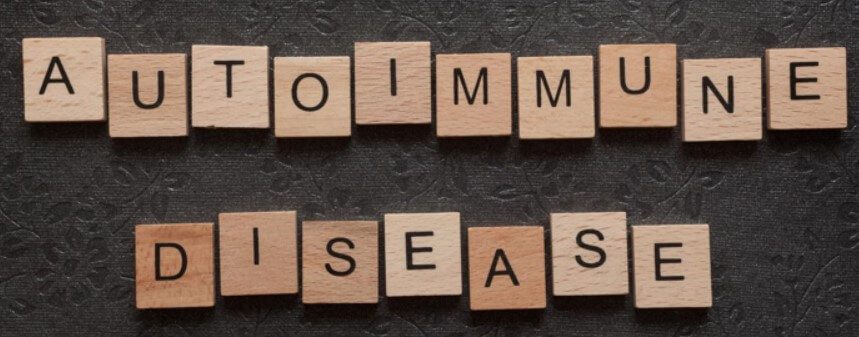
by admin | Apr 4, 2024 | Diabetes, Mesenchymal Stem Cells, Regenerative Medicine, Stem Cell Research, Stem Cell Therapy
According to the World Health Organization, an estimated 422 million people worldwide have diabetes. Numerous studies have demonstrated that people with diabetes are at an increased risk of developing both acute and chronic pancreatitis, which increases the risk of developing pancreatic cancer.
Considering the lack of effective therapeutic options for pancreatitis and the limited treatment options for diabetes, researchers have recently turned to the potential of using mesenchymal stem cells (MSCs) as alternative therapeutic treatment options for these conditions.
In this review, Scuteri and Monfrini evaluate the different uses of MSCs for both the treatment of diabetes and the reduction of diabetes-related disease development.
According to the authors, MSCs offer several advantages, including the ability to be isolated from different tissues in a simple way, the ability to be easily harvested and expanded in vitro, and the absence of ethical problems associated with harvesting and use.
In addition, MSCs demonstrate the ability to differentiate, release soluble factors, and migrate toward lesions and sites of inflammation. Considering that inflammation and apoptosis are significant etiopathological factors of diabetes and pancreatitis, Scuteri and Monfrini indicate that MSCs are excellent candidates for regenerative medicine purposes.
In the case of MSCs and diabetes, research has demonstrated that differentiation of MSCs into insulin-releasing cells has been demonstrated in vitro after direct contact with pancreatic islets; the release of anti-inflammatory and antioxidant factors has improved the engraftment and prolonged the survival of transplanted pancreatic islets; and inhibited the apoptotic pathways triggered by endoplasmic reticulum stress in transplanted pancreatic islets. In analyzing this research, the authors conclude that the potential exists for the safe and effective use of MSCs for treatment of diabetes.
Although there has been growing interest in exploring the potential of MSCs on pancreatitis, there have only been a few studies exploring this therapeutic option. In these studies, the presence of MSCs was observed to reduce fibrosis and parenchymal damage by reducing proinflammatory factor expression.
In regard to MSCs and pancreatic cancer, since diabetes and pancreatitis are risk factors for the development of pancreatic cancer and considering MSCs have been found to hold potential as a therapeutic option for these diseases, using MSCs to interrupt the flow of factors leading to the development of pancreatic cancer should lower the incidence of diabetes-related pancreatic cancers.
The authors conclude that MSCs are a very promising therapeutic option for the treatment of diabetes, pancreatitis, and pancreatic cancer.
Source: “Progress in exosomes and their potential use in ocular diseases.” 18 Sep. 2020, https://www.ncbi.nlm.nih.gov/pmc/articles/PMC7459212/.

by Stemedix | Apr 1, 2024 | Stem Cell Research, Age Management, Mesenchymal Stem Cells, Regenerative Medicine, Stem Cell Therapy, Studies
According to the Centers for Disease Control and Prevention, four million adults in the United States have fibromyalgia. It’s an often-misunderstood condition that leads to systemic joint and muscle pain, along with fatigue, making daily life very difficult. To deal with the pain the condition causes, it’s important to understand why it occurs. Learn more about fibromyalgia and your pain management options.
What Is Fibromyalgia? Symptoms and Causes
Fibromyalgia is a condition that leads to pain and tenderness all over the body. It’s a chronic condition, though symptoms tend to come and go. During flare-ups, the pain can be significant enough to interfere with daily life while also affecting sleep, leading to mental and physical distress.
During a flare-up, you can experience:
- Fatigue
- Pain
- Headaches
- Face and jaw pain
- Bladder control issues
- Digestive problems
- Insomnia
It’s not clear what causes fibromyalgia, but scientists have found that certain conditions, as well as stress, can trigger it. You are also more likely to have this condition if you have a relative who suffers from it. Women are twice as likely as men to develop it.
People living with conditions like arthritis, depression, anxiety disorders, and irritable bowel syndrome are more likely to develop fibromyalgia.
Fibromyalgia can affect people of all ages, including children, but it’s more common in those who are middle-aged.
Diagnosing Fibromyalgia
If you’re experiencing symptoms, your doctor will likely perform a physical exam and discuss your medical history. There’s no test that can officially diagnose fibromyalgia, so your doctor will do what’s called a differential diagnosis — a kind of investigation that functions via a process of elimination.
Your doctor may order blood work to check hormone levels and look for signs of inflammation to help eliminate other diseases.
During the physical examination, your doctor will likely check for the presence or absence of tender spots by using light pressure.
Most of the time, if you have generalized pain that lasts for three months or more without any other underlying conditions, you’ll receive a diagnosis of fibromyalgia. The pain has to be spread throughout your body to get this diagnosis.
Treating Fibromyalgia: What You Can Expect
There isn’t one treatment that works for everyone. Usually, your doctor will try a number of different options, combining them to offer the most effective results.
Your provider will likely treat the condition depending on the symptoms you’re currently experiencing. There are stages of treatment, though these aren’t treatment plans that can be followed in order because the condition can affect you differently during every flare-up.
Exercise to Loosen Muscles
In some cases, turning to physical exercises, including stretching, can help loosen your muscles and ease some of the discomfort.
Low-impact exercises like walking and swimming help build flexibility that can improve your movement during flare-ups while simultaneously helping manage pain with the release of endorphins they stimulate. Exercise may also help you get better sleep.
Medications for Symptom Management
Over-the-counter medications can help manage pain, as can narcotics, though your doctor will prescribe these with care since they can lead to dependence.
Antidepressants can often also help the process, easing some of the fatigue and pain. For those who have trouble sleeping because of fibromyalgia, sleeping aids are often a good choice.
Heat and Cold Therapy for Milder Pain
In some cases, heat and cold therapy is also effective in managing some symptoms, especially if they’re mild. Alternating hot and cold packs helps the muscles release some of the tension that could be causing pain.
Occupational Therapy for Everyday Tasks
Turning to an occupational therapist is a great way of finding out how to restructure your life when you experience flare-ups. This type of therapist can help make adjustments to your work areas while also helping you find better ways of performing certain tasks so that you experience fewer symptoms.
Massage and Acupuncture to Improve Range of Motion
Massage therapy is a trusted technique. It relies on the manipulation of your muscles and soft tissues, increasing blood flow and improving range of motion while helping reduce pain. For many, it helps relieve stress, too, which can impact the severity of the symptoms.
Acupuncture is also helpful, with the needles affecting blood flow levels and even how certain neurotransmitters in the brain work.
Lifestyle Changes for Flare-Up Reduction
Making changes to your everyday life is an important way of helping minimize the symptoms of flare-ups, so try to incorporate some into your daily life. The right options can depend on your preferences. Some people turn to meditation, while others prefer to do breathing and mindfulness exercises.
Regenerative Medicine to Handle Inflammation
One option people choose to try because of its promise is regenerative medicine.
The variety of treatments available include platelet-rich plasma therapy and stem cell therapy, which uses mesechymal stem cells to reduce inflammation and help calm the immune system. This makes it possible to better handle symptoms when you do have a flare-up.
Stem cell therapy is easy to combine with other treatment options and doesn’t require a long recovery period or the stress of dealing with side effects. Stem cell therapy and other regenerative medicine options help treat the underlying triggers like inflammation, so you’re not just covering symptoms with medications.
Living With Fibromyalgia
It can seem daunting to live with a chronic condition like fibromyalgia, but with some lifestyle changes and an understanding of what triggers your flare-ups, as well as a combination of treatments, you can better manage the condition.
If you’re dealing with fibromyalgia, ask your doctor whether an option like stem cell therapy and other regenerative medicine treatments can help.
Choosing options that target inflammation and trying to get to the underlying cause of the problem instead of only masking the symptoms can make it possible to live a happy and healthy life with fibromyalgia. To learn more about pain management for Fibromyalgia visit our website or contact us now!

by admin | Mar 28, 2024 | Neuropathy, Mesenchymal Stem Cells, Stem Cell Research, Stem Cell Therapy
The International Association for the Study of Pain defines neuropathic pain as “pain arising as a direct consequence of a lesion or disease affecting the somatosensory system”. While general neuropathy is diverse by nature, neuropathic lesions generally fall into four categories: focal or multifocal lesions of the peripheral system, general lesions of the peripheral nervous systems, lesions of the central nervous system, and complex neuropathic disorders.
Although neuropathic pain is typically characterized as chronic pain, it is also considered more severe than other types of chronic pain; this is in large part due to the increased disruption to overall quality of life when compared with other chronic pain syndromes.
As part of this review, Fortino, Pelaez, and Cheung review specific types of neuropathic pain and summarize current research being done to replace pharmacological treatments with cellular therapies, including stem cells, designed to have a longer-lasting effect on the treatment of neuropathic pain.
Neuropathic pain presents itself in many different forms, including spontaneous sensations and superficial pain. These forms of neuropathic pain differ from nociceptive pain in that nociceptive pain occurs as a result of tissue damage while neuropathic pain is the product of damage to the peripheral or central nervous system. Neuropathic pain also differs from nociceptive pain in its proportion to the intensity of the stimuli; in other words, while nociceptive pain is proportional to the intensity of the stimuli, neuropathic pain is not.
Considering that uninjured fibers that intermingle with degenerating nerve fibers participate in pain signaling, it is important for the environment surrounding these uninjured nerve fibers to be able to protect them from degeneration and exacerbation associated with neuropathic pain. Since growth factors have proven critical in promoting neuron development and survival and since neurotrophic factors are secreted by stem cells, researchers hypothesize that stem cells present a potential therapy for longer lasting treatment of neuropathic pain.
Clinical studies have demonstrated that neurotrophic factors offered by stem cells when in direct or indirect contact with the lesioned nerve, appear to provide neuroprotection and neuroregenerative effects.
Despite the potential for stem cell therapies to provide protection from neurodegeneration and to promote neuroregeneration, the authors raise several issues that need to be addressed, including determining an optimal dose for stem cell transplantation and obtaining a better understanding of the homing capabilities of stem cells.
In addition to exploring the benefits of neurotrophic factors of stem cells in treating neuropathic pain, transplantation of human mesenchymal stem cells (hMSCs) to explore potential benefits in treating diabetic peripheral neuropathy and spinal cord injuries are also currently being evaluated.
While the role of stem cells in the treatment of neuropathic pain is not yet fully understood, the authors find their ability to modify cellular processes to provide protective and restorative environments that can reverse the causes of neuropathic pain a promising therapy for the long-term treatment of this condition.
Source: “Concise Review: Stem Cell Therapies for Neuropathic Pain – PMC.” https://www.ncbi.nlm.nih.gov/pmc/articles/PMC3667564/.

by Stemedix | Mar 25, 2024 | Osteoarthritis, Pain Management, Regenerative Medicine, Stem Cell Research, Stem Cell Therapy
Living with osteoarthritis pain can be debilitating. You might feel barred from activities you previously enjoyed. With osteoarthritis, everything feels more difficult, including playing with your grandkids, enjoying sports, and walking in nature.
Addressing osteoarthritis pain involves a combination of lifestyle changes, modern scientific therapies, and medications. Here are some of the ways you can get relief from the pain and discomfort osteoarthritis brings to your life.
The Root Cause of Osteoarthritis
Arthritis is an inflammatory joint condition that currently has no cure. If you have osteoarthritis, your body experiences cartilage degeneration. This means the spongy tissue that connects your bones together is starting to break down.
Bone Friction and Damage
When enough cartilage is lost, the friction of your bones rubbing together causes pain, inflammation, and discomfort. Your ligaments start to stretch in painful, unhealthy ways.
Osteoarthritis operates in two ways. Cartilage breakdown causes bone friction, which increases your pain levels. Bone friction also causes serious bone damage that worsens your pain.
Because of these stressors, osteoarthritis pain can be debilitating. This condition can be progressive, getting worse as your joints and ligaments become stressed due to lack of cartilage. If you get proper treatment, however, you may get rid of your symptoms altogether.
There are a few risk factors for developing osteoarthritis. With proper treatment, you can go into remission and experience far fewer painful symptoms.
Who Gets Osteoarthritis?
What causes your cartilage to break down in the first place? The answer is more complex than you might expect. Some people are more susceptible to joint and cartilage damage than others.
Older Adults
Age is a major risk factor for developing osteoarthritis. Patients who are 40 or older are more likely to develop this condition.
Throughout your life, your joints and connective tissues experience “wear and tear,” and the effects accumulate as you age. This can create problems with your cartilage’s structural integrity, eventually leading to osteoarthritis. It makes sense that aging adults experience higher rates of this inflammatory health condition.
People With Sudden Injuries
You may develop osteoarthritis if you’ve experienced a sports injury or sudden joint impact. Injuries can harm the cartilage that connects your joints, increasing your risk of developing this condition.
If you’re an older adult who played sports in your younger years, you may notice symptoms of osteoarthritis popping up as you age. Car crash victims and people with traumatic joint injuries are also vulnerable.
Obese Patients
Obesity raises your risk for this degenerative disorder. The more extra fat you carry, the more stress and pressure your joints experience. Over time, excess body weight can break down connective tissues in your knees, legs, and feet.
Since osteoarthritis is an inflammatory condition, being obese can exacerbate the symptoms. If you eat a poor diet full of processed foods and refined sugars, your body is more vulnerable to inflammation. These conditions make osteoarthritis symptoms even more debilitating.
How to Get Relief from Osteoarthritis Pain
The joint pain and discomfort that come with osteoarthritis can impair your daily life. If you like to be active and move around a lot, this disease may force you to change your lifestyle. Luckily, you have options when it comes to osteoarthritis pain relief.
From over-the-counter pain medications to natural holistic remedies, there’s no shortage of osteoarthritis pain relief. You can choose what works best with your personal preferences and lifestyle.
Pharmaceutical Treatments
Most physicians recommend over-the-counter anti-inflammatory drugs to manage osteoarthritis pain. If you have debilitating discomfort, some doctors will prescribe stronger pain medication. These treatments are usually intended for short-term use.
While medication covers up the pain you’re experiencing, it doesn’t solve the underlying problem. You likely won’t get long-term relief from medication alone.
Stem Cell Therapy
Stem cell treatments for osteoarthritis may reduce inflammation and pain over time. This evidence-based therapy uses special “blank” cells to regenerate damaged tissues. Since osteoarthritis is a degenerative condition, stem cell therapy is a potentially effective solution to cartilage breakdown.
Stem cells come from the human body. These treatments are completely drug-free and use the natural powers of your body’s wound-healing process. Patients who seek stem cell therapy for osteoarthritis may notice significant improvements in their comfort levels after a few weeks.
Specialized Massage
Massages can help improve blood flow to the affected areas. As a result, massage therapy may be a good supplemental tool for relieving osteoarthritis pain.
Many people experience better mobility after a few massage therapy sessions. A massage therapist specializing in osteoarthritis pain relief can help you feel more comfortable and mobile in your daily life.
Acupuncture
Acupuncture is a holistic solution for joint pain osteoarthritis causes. Patients from different backgrounds and with various health problems have experienced pain relief from acupuncture. This therapy uses tiny needles to relax your muscles and redirect your brain’s pain signals.
Acupuncture should be used as a supplement to other types of therapy. It can provide short-term relief, but much like medication, it doesn’t treat the root cause of your osteoarthritis pain.
Lifestyle Changes
Lifestyle changes offer effective, natural solutions to your daily discomfort. Nutrition, weight, sleep, and stress management all play large roles in osteoarthritis pain relief.
Your body needs the right nutrients to control inflammation and accelerate wound healing. You also need plenty of sleep and stress management to maintain a healthy body. Any or all of these factors can improve or worsen your osteoarthritis pain.
As a rule of thumb, you should prioritize:
- Healthy weight management
- Good nutrition
- Sleep quality and quantity
- Stress relief
- Gentle daily exercise
These lifestyle factors will all help your body recover from osteoarthritis attacks. You may be able to prevent the inflammation from getting worse by improving these areas of your life.
Experience Osteoarthritis Pain Relief to Enjoy Healthy Movement Again
You’re understandably ready to get back to doing what you love. Managing your osteoarthritis pain doesn’t have to take over your life. Live a healthy lifestyle as you consider different therapies and treatments to take the edge off of your joint pain.

by admin | Mar 21, 2024 | Neuropathy, Mesenchymal Stem Cells, Stem Cell Research, Stem Cell Therapy
Neuropathic pain is pain caused as part of a dysfunction in the nervous system, including the peripheral nerves, brain, and spinal cord. Often characterized by spontaneous pain occurring for no specific reason, neuropathic pain can range from mild to severe and is currently estimated to affect 150 million people in the United States. The risk of experiencing neuropathic pain is also much higher in those with preexisting medical conditions, especially diabetes.
Treating neuropathic pain has proven to be very challenging and, to date, most current medical treatments are designed to mitigate pain while not addressing the underlying cause of the pain.
Spinal reorganization and changes in the excitatory or inhibitory pathways controlling neuropathic pain development following peripheral nerve injury are correlated with altered gene expression. Considering this, Siniscalco, Rossi, and Maione review newer molecular methods, including gene therapy and delivery of biologic anti-nociceptive molecules, as potential therapeutic approaches for the treatment of neuropathic pain.
The authors also review the use of stem cell therapy as the potential to slow the progression of or even altogether block neuropathic pain. Stem cells have the ability to incorporate into the spinal cord, differentiate, and to improve locomotion recovery. Furthermore, and despite associated ethical concerns, human stem cells have demonstrated the ability to migrate to the injured area of the spinal cord and differentiate in order to promote axon regeneration and synapse regeneration as a way to alleviate neuropathic pain and improve motor behavior.
Further exploring stem cell therapy as a potential treatment for neuropathic pain, Siniscalco et al. point out that using genetically engineered stem cells expressing trophic factors appears to be a useful tool in relieving neuropathic pain. The authors hypothesize that the benefit brought by stem cells could be a result of their ability to deliver anti-nociceptive molecules close to the pain processing centers or site of injury and that the trophic factors provided by stem cells could, themselves, act as an anti-nociceptive drug.
Of the many various types of stem cells, the authors believe that mesenchymal stem cells (MSCs) demonstrate the potential for the best results in pain-care research. Found throughout the body, MSCs demonstrate a high expansion potential, genetic stability, and stable phenotype, and are easily collected and transported.
In addition, MSCs also are able to migrate to sites of tissue injury and demonstrate strong immunosuppressive properties and are able to differentiate into neurons and astrocytes. Animal models of neurological disorders have demonstrated that MSCs are able to improve neurological deficits and to promote neuronal network improvements.
Although the underlying mechanisms of how MSCs specifically address pain behavior are yet to be fully understood, their ability to migrate to injured tissue and mediate functional recovery suggests that MSCs could modulate pain generation after a neuropathic injury.
The authors conclude that neuropathic pain is a very complex disease that is very difficult to treat. While current treatment is designed to address the symptoms of pain, a treatment for the cause has yet to be developed. There are new molecular methods, including antisense strategy, gene therapy, and virus therapy currently being evaluated as potential therapeutic options to treat the underlying causes of pain.
Most recently, preliminary clinical evidence suggests that stem cell therapy could be the most effective long-term treatment for definitive relief of pain caused by neuropathic injury or disease.
Source: “Stem cell therapy for neuropathic pain treatment – PMC – NCBI.” https://www.ncbi.nlm.nih.gov/pmc/articles/PMC3908122/.

by Stemedix | Mar 18, 2024 | Autoimmune, Multiple Sclerosis, Regenerative Medicine, Rheumatoid Arthritis, Stem Cell Research, Stem Cell Therapy
Your body is generally very good at telling what’s a foreign invader, like a virus or bacteria, and what’s not — but sometimes, it gets it wrong.
If you have an autoimmune disease, your immune system has begun to associate parts of your body, like your skin or joints, as foreign. When this occurs, the body releases antibodies that attack those healthy cells.
Essentially, your immune system overreacts. That’s what leads to autoimmune diseases. There are many of these kinds of illnesses, but some are much more common than others.
1. Rheumatoid Arthritis: Attacking Your Joints
Rheumatoid arthritis is a disease in which your immune system attacks the joints throughout your body. It attacks the joints on both sides of your body and leads to uncontrolled inflammation that damages cartilage. The joints can begin to deform, and your bones can even erode.
You can experience symptoms like:
- Pain, stiffness, and swelling in joints
- Fatigue
- Fever
- Weakness
With rheumatoid arthritis, you can have periods of remission when you have few to no symptoms, but these are followed by flare-ups.
2. Type One Diabetes: Targeting Insulin-Producing Cells
Your pancreas produces a hormone called insulin, which regulates your blood sugar levels. If you have type one diabetes, your immune system attacks the cells in your pancreas that produce insulin. You can experience symptoms like:
- Extreme thirst
- Fatigue
- Blurred vision
- Frequent urination
- Weight loss
- Vaginal yeast infections
- Slow healing of sores and cuts
Type one diabetes has a strong genetic component, and there may be certain environmental factors, like viruses or toxins, that can also trigger the disease if you have a predisposition.
3. Multiple Sclerosis: Damaging Myelin Sheaths
Multiple sclerosis is an autoimmune disease that damages the coating that surrounds nerve cells. These are called myelin sheaths, and if they’re damaged, the transmission speed of messages between your brain and your spinal cord can be delayed.
You can experience symptoms like:
- Muscle weakness
- Numbness
- Changes to your vision
- Loss of balance
- Mood changes
- Trouble with cognitive function
You can experience remission periods in which you may not have any symptoms.
4. Psoriasis: Leading Skin Cells to Multiple Too Quickly
Usually, skin cells grow and then die off and shed. Psoriasis causes cells to multiply too rapidly, leading to the formation of patches. People who have lighter skin tones can have patches that appear red with white plaque scales, while on darker skin tones, the patches can appear purple or dark brown with gray scales.
It can cause symptoms like:
- Raised areas of thick skin
- Rashes
- Flaky or scaly plaque
There are a few types of psoriasis, with some appearing in your skin folds and some even causing pus-filled bumps.
5. Inflammatory Bowel Disease: Swelling in the Intestinal Wall
Inflammatory bowel disease causes the lining of the intestinal wall to swell. Different parts of your gastrointestinal tract are affected depending on where the inflammation is located.
Symptoms include:
- Abdominal pain
- Anemia
- Malnutrition
- Weight loss
- Rectal bleeding
- Fecal incontinence
One type of inflammatory bowel disease is Crohn’s disease, which can cause inflammation anywhere along the tract, from your mouth to your anus. Ulcerative colitis, however, affects the lining of the large intestine and rectum. Microscopic colitis causes inflammation that can only be seen via a microscope.
6. Lupus: Causing Inflammation Throughout Your Body
Lupus is an autoimmune disease that causes your immune system to attack your entire body. Common symptoms include:
- Fatigue
- Shortness of breath
- Swollen glands
- Hair loss
- Fever
- Rashes
- Blood clots
- Confusion
There are a few types of lupus, including lupus that only affects your skin and medication-induced lupus.
7. Graves’ Disease: Overworking Your Thyroid
This type of immune disease attacks your thyroid gland, leading it to produce too many hormones. This can lead you to experience symptoms like:
- Fast heartbeat
- Unintentional weight loss
- Goiter
- Heat intolerance
Some people who have this condition can experience symptoms that affect the skin or eyes.
8. Addison’s Disease: Impacting the Adrenal Glands
Addison’s disease is a chronic condition in which your adrenal glands don’t produce enough cortisol and aldosterone. Cortisol is a hormone that helps your body respond to stress while also helping you maintain blood pressure, heart function, and more. Aldosterone is a hormone that controls your body’s sodium and potassium levels.
You can experience symptoms like:
- Nausea
- Vomiting
- Abdominal pain
- Patches of dark skin
- Fatigue that gets progressively worse
- Loss of appetite
- Dehydration
Some people also experience low blood sugar levels with the disease.
9. Sjögren’s Disease: Causing Dry Eyes and Mouth
This illness occurs when your immune system attacks the glands that create moisture in your mouth, eyes, and other parts of your body. There is primary Sjögren’s disease, which occurs on its own, and secondary Sjögren’s disease, which happens when another condition triggers the disease.
You can experience symptoms like:
- Dry nose and frequent nosebleeds
- Vaginal dryness
- Dry and itchy eyes
- Dry throat
Some people also experience muscle pain, swollen lymph nodes, and even trouble swallowing.
10. Celiac Disease: Attacking the GI Tract
People who have Celiac disease can’t have gluten, which is a protein found in rye, wheat, and other grain products. If you have this disease, your immune system reacts to any gluten it finds in the small intestine, leading to inflammation. You can experience symptoms like:
- Diarrhea
- Vomiting
- Abdominal bleeding
- Constipation
Because your immune system attacks your gut if you eat gluten, it doesn’t allow you to receive the nutrients you need. People may experience nutritional deficiencies that can cause many other symptoms.
Managing Autoimmune Diseases with Regenerative Medicine
Most autoimmune conditions can be managed. One of the most promising options, especially when combined with other treatments, is regenerative medicine.
Regenerative medicine options like stem cell therapy harness your body’s natural healing mechanisms. They can help reduce inflammation, which plays a huge role in most autoimmune diseases. With less inflammation, blood circulation improves, bringing more nutrients and oxygen to the affected areas.
To determine whether regenerative medicine is a good choice to help manage your autoimmune conditions, consult with your doctor.







 St. Petersburg, Florida
St. Petersburg, Florida
